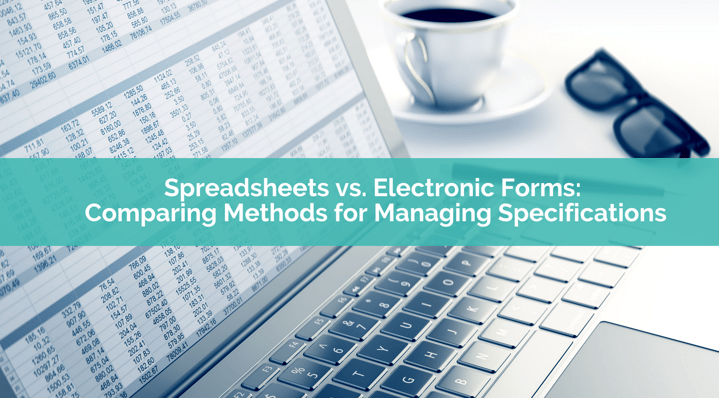
A lot of companies still rely on spreadsheet technology to organize their important information. Other companies use electronic forms for their data management. What exactly is the difference? And is one better than the other? In this article we’ll discuss both options and weigh their pros and cons.
What is the Difference Between Spreadsheets and Electronic Forms?
A common difference between a spreadsheet and an electronic form is where each is stored/managed and the ancillary functions due to the storage medium. If you are using Excel or some similar spreadsheet creation application, your information is stored on your computer, in a network share, or in an online collaboration tool designed for storage (as opposed to controlled document management). An electronic form is hosted within a database, and ideally in one that is designed for document control, be it on premises or in the cloud. So, while both eliminate the cost of printing, storing, and distributing pre-printed forms, only electronic forms allow for digital signatures, routing, and reduced approval time because these features are hardwired into their hosting system.
To break it down further, fundamentally, a database is a computer program designed to store, manipulate, and retrieve information using electronic forms. These forms write to tables used for efficient storage and retrieval of information. This structure is similar to spreadsheets, but unlike a spreadsheet, most databases are relational, meaning that data between tables can be linked and cross-referenced.
Data Integrity and Security
The key differences between spreadsheets and electronic forms greatly affect the integrity and security of your information. Although spreadsheets can be a useful tool for many companies, they are usually not ideal for long-term data storage or document management. This is primarily because they do not enforce integrity, or overall accuracy, completeness, and consistency of data. And, they offer little protection from data corruption.
Unlike a spreadsheet, an electronic form is very strict in defining data. Each field is pre-configured to store a specific number of alpha characters or numbers, or even single or multi-value picklists with administrator controlled acceptable values. This prevents database users from entering numbers into a character field or vice versa. As a result, databases are better at maintaining data integrity and avoiding errors.
When it comes to security, electronic forms allow for stronger information defense; primarily because you can protect private information from wandering eyes better when it is hosted within a database. Spreadsheets are self-contained documents that may reside on individual computers or file servers. Electronic forms, for the most part, require dedicated database servers. This means that you cannot misfile or accidentally delete an electronic form like you could with a spreadsheet.
And, although you can password-protect a spreadsheet, you generally cannot audit who views or edits it. With a database, however, you cannot view or modify the data unless you have permission. The database logs any viewing and editing you perform for future discoverability.
Data Accessibility and Speed
Although data in spreadsheets can be sorted and filtered, electronic forms have searching functionality that can retrieve records matching specific criteria, cross-reference records in multiple tables, and perform searches across specific fields. Therefore, electronic forms provide a flexibility to sort and present data in many different of ways that would be very difficult to do in a spreadsheet. Even with properly organized data, it can take a long time to locate specific files when using spreasheets. Using electronic forms, a comprehensive search feature is in place, allowing you to locate and retrieve any document in mere seconds based on a wide variety of available search criteria.
Even further, since the database will enforce the same quality standards for any dataset, decisions can be made with confidence. And because databases are designed to refer to information without loading all the information into memory, unlike spreadsheets, databases operate faster than spreadsheets when handling large datasets. And spreadsheets have memory limitations.
The Best Method for Managing Specifications
Using electronic forms through a specification management system is a proven way to increase data integrity, enforce standards across your company, and decrease time to market. If you are looking for an organization to help you optimize your specification management process, DocXellent can help. We are glad to advise you on how you can accomplish your goals and demonstrate how our specification management application can maximize your company’s efficiency. Contact us today.




























